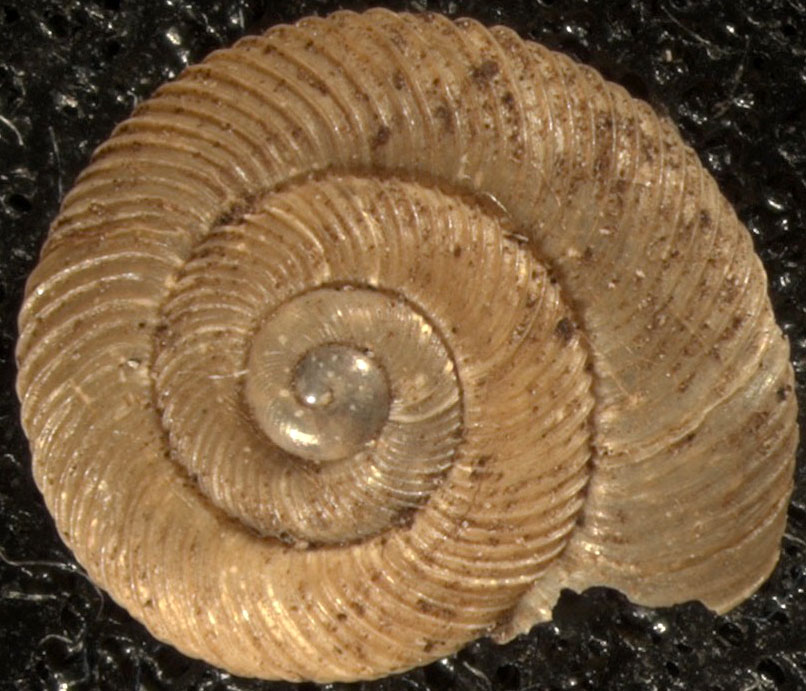Classification:
Domain: Eukaryote
Kingdom: Animalia
Phylum: Mollusca
Class: Gastropoda
Order: Stylommatophora
Family: Discidae
Genus: Discus
Species: Discus catskillensis
Common Name: Angular Disc

Photograph of Discus catskillensis shell (WI Snail Report
).
Classification Explanation:
-
Domain: Eukaryote is one of the three domains that can represent all life. In English, Eukaryote, means "true kernel", which can represent the nucleus of a cell (EOL).
-
Kingdom: Organisms that are in the classification of Animalia are multicellular and are heterotrophs, which means that the the organism does not produce its own nutrients (EOL).
-
Phylum: Mollusca, in English, means "soft". Mollusca include organisms ranging from snails to octopuses (Hickman et al. 2009).
-
Class: Gastropoda literally means "belly foot". This class contains the most diverse group of mollusks. Gastropods are different from all mollusks because they contain a torsion, which is a visceral mass that is twisted 180o, which occurs during the development of the veliger larva (Hickman et al. 2009).
-
Order: Stylommatophora represent an organism that has two pairs of invaginable tentacles. Invaginable tentacles means that these organisms are allowed to draw their tentacles back into themselves. At the anterior pair of tentacles at the tip bares the organism's eyes (EOL).
-
Family: Discidae means "disc". Organisms in this family are gregarious which means they commonly live in groups (Martin, 2000).
-
Genus: Discus is the genus name for small snails that range from five to seven millimeters wide in size and are usually flatter to resemble a disc (Martin, 2000).
-
Species and Common Name: Discus catskillensis has a heavily-ridged disc shape shell that is around five millimeters in diameter. The shell color begins at a light brown color that gradually becomes paler. The angular disc is lighter in color and flatter and more angular than their cousin species (Carnegie Museum of Natural History).
Information for classification: ITIS Report
Continue on to find information about the habitat of Discus catskillensis!